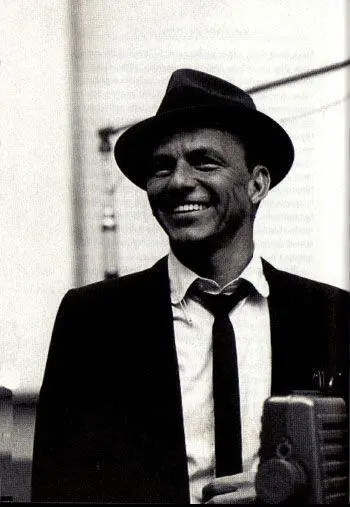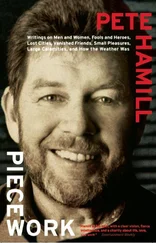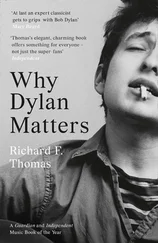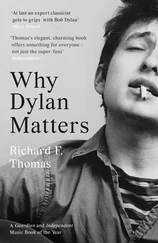Sinatra would get his voice back and continue to work; in that same year of 1950 he still had several years left on his Columbia Records contract. But as a singer he was confused, often torn, capable of fine work on “Hello, Young Lovers,” “Birth of the Blues,” and “Why Try to Change Me Now?” while recording such second-rate tunes as “Tennessee Newsboy” and the infamous “Mama Will Bark,” a duet with a bosomy TV star named Dagmar. The hit-driven Mitch Miller, boss of Columbia Records, was often blamed for the erratic quality of Sinatra’s work. But he insisted later that Sinatra could never be forced to make any record and that he had agreed to even the Dagmar duet. Certainly, Sinatra was desperate for a hit. He hated the new music, songs like Frankie Laine’s “Mule Train” or “Come On-a My House,” performed by Rosemary Clooney (a singer he otherwise admired); but while his singles were selling 25,000 copies, others’ were soaring over a million, and Mitch Miller had produced them.
At the heart of Sinatra’s anxiety was his fading relationship with the audience. Men had never been a major part of that audience; the outbreak of the Korean War in June 1950 reminded many of them that Sinatra had never taken part in World War II. Some veterans of that war (including baseball great Ted Williams) were now being called back to active duty while Sinatra had never served a day (neither had John Wayne, but right-wing actors were never criticized in the way that liberal actors were attacked). The Cold War was now hot; communist troops were killing America’s young men in the Korean peninsula. The great hunt for domestic subversives, for pinkos, com-symps, the enemy within, became even more intense. Joe McCarthy, the junior senator from Wisconsin, emerged as the major voice sniffing into past associations with communists, suggesting evidence of wide conspiracies, and he was not alone. From California the crusade was driven by an ambitious young politician named Richard Nixon. Liberalism itself was soon reeling, with some Republicans describing the long reign of Roosevelt and his successor, Harry Truman, as “twenty years of treason.” It did not help Sinatra’s reputation that he had supported Henry Wallace for president in 1948.
In 1950 another kind of inquiry into domestic enemies began. The Kefauver hearings into organized crime became a television extravaganza, helping to establish the new medium. Elaborate organizational charts were presented, showing the way territory was divvied up by the Mob. The word Mafia was shouted from headlines. Connections between Mob guys and big-city political machines were explored. Among many others, the names of Longie Zwillman and Willie Moretti were tossed around, the refrain of “I refuse to answer on grounds that I will tend to incriminate myself” was heard in the land, and there were more rehashed stories about the famous summit conference in Havana. Mobology became a staple of the newspapers, and many reprinted the photograph of Sinatra and Joe Fischetti getting off that plane. Some of the more creative journalists even claimed to know that each attaché case contained a million dollars, in spite of that being a physical impossibility.
If Sinatra’s triumphs were, in part, a result of the times of World War II, his defeats would be part of the times of the early 1950s. His politics were suddenly a bit musty to some, un-American to others; as the exodus of blacks from the South got under way, the contempt for liberalism also acquired an element of racism. Sinatra’s urban, freewheeling style, with its reminders of immigrant origins, was suspect in white Middle America and its expanding suburbs, where the demand for conformity was growing more powerful. His connections to the Mob, real or illusory, outraged more and more city people as the heroin plague spread and the crime rate soared. The bootlegger might have been a romantic figure; there was nothing romantic about a dope peddler. In some ways, Sinatra was a public figure who fed two paranoid visions: the secret society of the Mob and the agenda of the liberal left. On the crudest level, this did not help him sell records. It certainly did not help him sell records to men. Older men sneered at Sinatra. Younger men were listening to Frankie Laine and Guy Mitchell.
Much more dangerous to Sinatra was his abandonment by female fans. This almost certainly was the result of his brutal public humiliation of his wife. It was one thing to have discreet affairs, but flaunting Ava Gardner during a January 1950 gig at the Shamrock Hotel in Houston, while still married to Nancy — that was cruel. His third child, daughter Tina, was only a year and a half old. The boy, Frank Jr., was five. But little Nancy was eight. She was going to school. She could hear the taunts. Her mother, a beautiful, normal woman, was being tossed aside for an actress who was once married to Mickey Rooney! This was outrageous. Or so believed many of the women who in 1944 and 1945 had bought millions of Sinatra’s records or had waited in the rain to see him at the Paramount. So they left. Many never came back. They identified too strongly with Nancy Barbato Sinatra, who soon settled into the role she would play for the rest of Sinatra’s life: the Woman Who Would Wait. Asked once why she had never remarried, she answered, “After Sinatra?”
The loss of that core audience was a source of pervasive, contaminating anguish for Sinatra. He was only ten years removed from the Rustic Cabin; now his nights were haunted by the dread of losing everything, of a forced return to the maiming obscurity of his youth. More than many other performers, he needed the audience. He needed to feel a connection with all those strangers, needed them to ratify his existence and his value, needed to feed on their emotions, as they sometimes were nourished by his. And now they were gone. Or so it seemed. And without the audience, he was just the boy who was applauded for knowing the words. Or worse: an older man singing to an empty room.
It was the aftermath of the Fall that changed the audience and changed Sinatra. Right out there in public, Sinatra had been flattened. And men often saw the world in sports terms. One thing they knew about prizefighters, for example, was that you never knew what a fighter was made of until he had been knocked down. Second-raters stayed down and took the count. The great ones always got up.
Sinatra got up.

THE HEAD HE TURNED TOWARD ME WORE A FACE LIKE MINE.
— W. S. MERWIN
AFTER THE FALL, the Comeback.
For two long and terrible years, Sinatra was a mess. He continued working, making records, appearing on television, performing in small clubs. But in 1952 and 1953 he had no records at all on the Billboard singles charts; he had made those lists every previous year since 1940. His three-year television contract with CBS was canceled after thirteen weeks because he wouldn’t take the time to rehearse and was abusive to too many people. A 1952 movie called Meet Danny Wilson contained many semi-autobiographical touches, including a racketeer who takes 50 percent of the earnings of a singer played by Sinatra. The movie has many fine songs, including “All of Me,” “I’ve Got a Crush on You,” “That Old Black Magic,” and “She’s Funny That Way.” But it was poorly directed and shabbily produced. Sinatra did a live engagement to help the movie when it opened at the Paramount in New York in 1952. That year I was sixteen, and I went to see him, for the first time, in the theater that only eight years earlier was loud with hysterical adoration. He was as good as everybody said he was: in command, singing with energy and feeling. But the theater was half empty. In other parts of the United States the movie opened and closed. That seemed to be the end of Frank Sinatra’s Hollywood career.
Читать дальше













